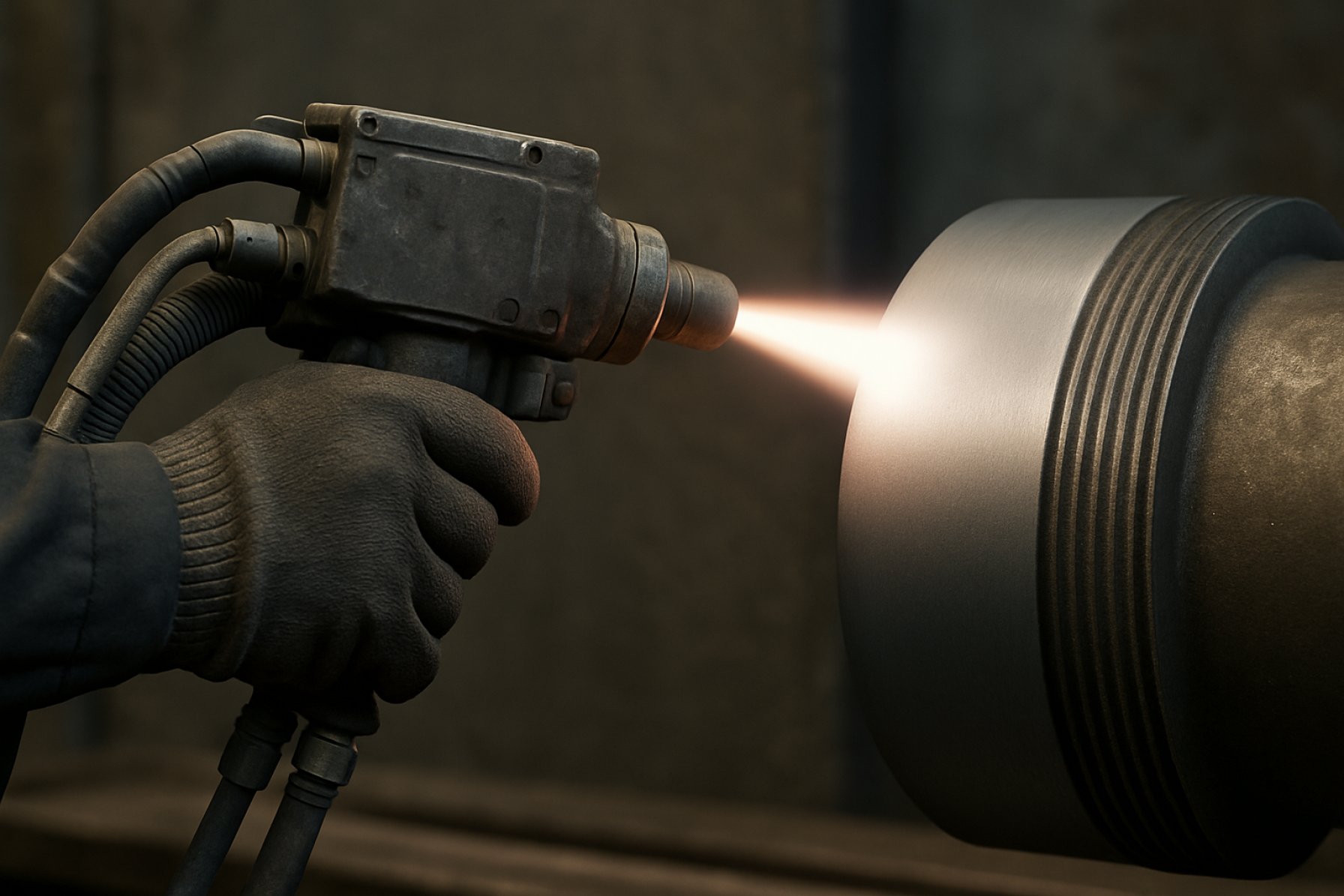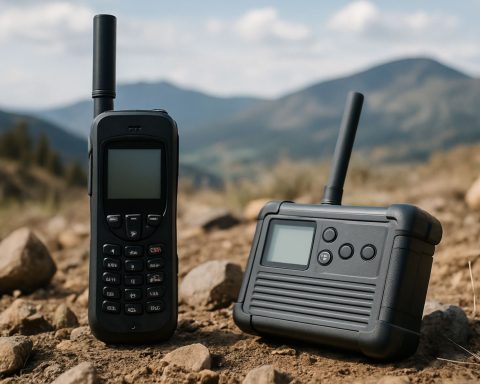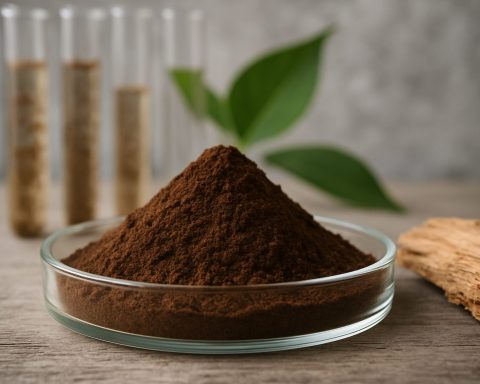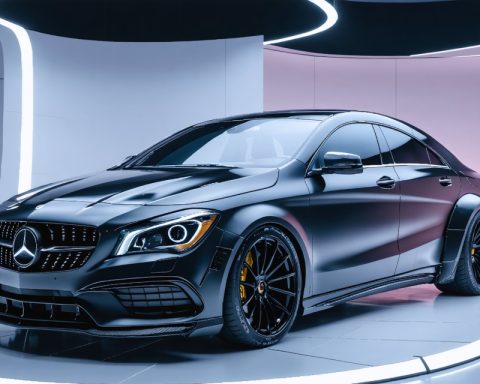Amorphous Metal Coatings Industry Report 2025: Market Dynamics, Growth Projections, and Strategic Insights for the Next 5 Years
- Executive Summary and Market Overview
- Key Technology Trends in Amorphous Metal Coatings
- Competitive Landscape and Leading Players
- Market Growth Forecasts (2025–2030): CAGR, Revenue, and Volume Analysis
- Regional Market Analysis: Opportunities and Hotspots
- Future Outlook: Innovation, Adoption, and Market Expansion
- Challenges, Risks, and Emerging Opportunities
- Sources & References
Executive Summary and Market Overview
Amorphous metal coatings, also known as metallic glass coatings, represent a rapidly advancing segment within the global coatings industry. These coatings are characterized by their non-crystalline atomic structure, which imparts superior properties such as exceptional hardness, high corrosion resistance, and excellent wear performance compared to conventional crystalline metal coatings. In 2025, the amorphous metal coatings market is poised for significant growth, driven by increasing demand from sectors such as energy, automotive, aerospace, and electronics.
According to recent market analyses, the global amorphous metal coatings market is projected to reach a value of approximately USD 1.2 billion by 2025, growing at a compound annual growth rate (CAGR) of over 7% from 2020 to 2025. This growth is underpinned by the expanding application base of these coatings, particularly in industries where component longevity and performance under harsh conditions are critical. For instance, the energy sector, especially wind and hydroelectric power, is increasingly adopting amorphous metal coatings to protect turbine blades and other components from erosion and corrosion, thereby reducing maintenance costs and downtime (MarketsandMarkets).
Regionally, Asia-Pacific dominates the market, accounting for the largest share in 2025, fueled by robust industrialization, infrastructure development, and the presence of major manufacturing hubs in China, Japan, and South Korea. North America and Europe also represent significant markets, driven by technological advancements and stringent regulatory standards for equipment durability and environmental protection (Grand View Research).
Key players in the market, such as OC Oerlikon Corporation AG, Praxair Surface Technologies, and H.C. Starck GmbH, are investing in research and development to enhance coating performance and expand their product portfolios. Strategic collaborations and capacity expansions are also notable trends, as companies seek to address the growing demand for high-performance coatings in emerging applications.
In summary, the amorphous metal coatings market in 2025 is characterized by robust growth prospects, technological innovation, and expanding end-use applications, positioning it as a key area of focus within the advanced materials sector.
Key Technology Trends in Amorphous Metal Coatings
Amorphous metal coatings, also known as metallic glass coatings, are gaining significant traction in advanced manufacturing due to their unique atomic structure, which imparts superior hardness, corrosion resistance, and wear properties compared to their crystalline counterparts. As of 2025, several key technology trends are shaping the evolution and adoption of amorphous metal coatings across industries such as aerospace, automotive, energy, and electronics.
- Advanced Deposition Techniques: Innovations in deposition methods, particularly thermal spray and physical vapor deposition (PVD), are enabling the production of thicker, more uniform amorphous coatings on a wider range of substrates. Enhanced process control and automation are improving coating consistency and scalability, which is critical for industrial adoption. Companies like Oerlikon Metco are at the forefront of developing next-generation thermal spray systems tailored for amorphous alloys.
- Alloy Design and Customization: The development of new alloy compositions, especially iron-, nickel-, and zirconium-based systems, is expanding the functional range of amorphous coatings. Tailored chemistries are being engineered to optimize properties such as corrosion resistance for marine applications or biocompatibility for medical devices. Research from organizations like The Minerals, Metals & Materials Society (TMS) highlights ongoing breakthroughs in alloy design.
- Integration with Additive Manufacturing: The convergence of amorphous metal coatings with additive manufacturing (AM) is a notable trend. Hybrid processes allow for the direct deposition of amorphous layers onto complex geometries, reducing post-processing and enabling the creation of multifunctional components. According to IDTechEx, this integration is expected to accelerate the adoption of amorphous coatings in high-value sectors.
- Smart and Functional Coatings: There is a growing focus on developing amorphous coatings with additional functionalities, such as self-healing, anti-microbial, or sensor-embedded properties. These smart coatings are being explored for use in critical infrastructure and medical devices, where enhanced performance and reliability are paramount.
- Sustainability and Lifecycle Considerations: Environmental regulations and the push for sustainable manufacturing are driving research into eco-friendly coating processes and recyclable amorphous alloys. Efforts to reduce energy consumption and hazardous byproducts during coating application are being prioritized by industry leaders and regulatory bodies such as the U.S. Environmental Protection Agency (EPA).
These technology trends are collectively propelling the amorphous metal coatings market toward broader industrial adoption and new application frontiers in 2025 and beyond.
Competitive Landscape and Leading Players
The competitive landscape of the amorphous metal coatings market in 2025 is characterized by a mix of established multinational corporations and innovative niche players, each leveraging proprietary technologies to capture market share. The sector is witnessing heightened competition due to the growing demand for high-performance coatings in industries such as automotive, aerospace, electronics, and energy. Key players are focusing on expanding their product portfolios, investing in R&D, and forming strategic partnerships to strengthen their market positions.
Among the leading companies, Oerlikon Metco stands out for its comprehensive range of thermal spray and surface solutions, including amorphous metal coatings tailored for wear and corrosion resistance. H.C. Starck is another major player, known for its advanced materials expertise and customized coating solutions for industrial applications. Praxair Surface Technologies (now part of Linde plc) continues to innovate in the field, offering amorphous alloy coatings that enhance component longevity in harsh environments.
In addition, Metglas, Inc. is recognized for its specialization in amorphous metal materials, supplying both raw materials and finished coatings to a global clientele. Dyna Alloy and Sulzer Ltd are also prominent, with Sulzer leveraging its global footprint to deliver advanced coating services across multiple sectors.
The market is further shaped by regional players and startups, particularly in Asia-Pacific, where rapid industrialization and government initiatives are fostering innovation. Companies such as Toyota Tsusho Corporation are expanding their presence in the amorphous coatings segment, targeting automotive and electronics manufacturers.
- Strategic collaborations and licensing agreements are common, as companies seek to access new technologies and markets.
- Product differentiation through enhanced performance characteristics—such as improved hardness, corrosion resistance, and thermal stability—remains a key competitive factor.
- Environmental regulations and sustainability trends are prompting players to develop eco-friendly coating processes and materials.
Overall, the amorphous metal coatings market in 2025 is marked by dynamic competition, technological innovation, and a strong focus on application-specific solutions, with leading players continuously adapting to evolving industry requirements and customer demands.
Market Growth Forecasts (2025–2030): CAGR, Revenue, and Volume Analysis
The global market for amorphous metal coatings is poised for robust growth between 2025 and 2030, driven by increasing demand across industries such as energy, automotive, electronics, and aerospace. According to projections by MarketsandMarkets, the amorphous metal coatings market is expected to register a compound annual growth rate (CAGR) of approximately 7.5% during this period. This growth is underpinned by the superior corrosion resistance, hardness, and wear properties of amorphous metal coatings compared to their crystalline counterparts.
Revenue-wise, the market is anticipated to expand from an estimated USD 1.1 billion in 2025 to nearly USD 1.6 billion by 2030. This upward trajectory is attributed to the increasing adoption of amorphous metal coatings in critical infrastructure and high-performance applications, particularly in the oil & gas and power generation sectors, where equipment longevity and reduced maintenance are paramount. The Asia-Pacific region is projected to lead the market in both revenue and volume, fueled by rapid industrialization and significant investments in energy and manufacturing sectors, especially in China, India, and Southeast Asia.
In terms of volume, the market is forecasted to grow at a CAGR of around 6.8% from 2025 to 2030, as reported by Grand View Research. The volume growth is supported by technological advancements in thermal spray and physical vapor deposition (PVD) processes, which are making the application of amorphous coatings more efficient and cost-effective. Additionally, the push for sustainability and longer product lifecycles is encouraging end-users to shift from traditional coatings to amorphous metal solutions.
- Key growth drivers: Rising demand for corrosion-resistant coatings in harsh environments, increased focus on energy efficiency, and the need for reduced maintenance costs.
- Regional highlights: Asia-Pacific remains the fastest-growing market, while North America and Europe continue to invest in R&D and high-value applications.
- Industry trends: Strategic collaborations and capacity expansions by leading players such as OC Oerlikon and Henkel AG & Co. KGaA are expected to further accelerate market growth.
Overall, the amorphous metal coatings market is set for significant expansion through 2030, with both revenue and volume metrics reflecting strong industry momentum and technological progress.
Regional Market Analysis: Opportunities and Hotspots
The global market for amorphous metal coatings is poised for significant growth in 2025, with regional dynamics playing a crucial role in shaping opportunities and identifying emerging hotspots. Amorphous metal coatings, known for their superior corrosion resistance, hardness, and wear properties, are increasingly being adopted across industries such as energy, automotive, electronics, and marine.
Asia-Pacific stands out as the fastest-growing region, driven by rapid industrialization, infrastructure development, and robust manufacturing sectors in countries like China, Japan, South Korea, and India. China, in particular, is a major hotspot due to its expansive steel and automotive industries, as well as government initiatives promoting advanced materials for energy efficiency and sustainability. The region’s focus on renewable energy, especially wind and solar, further boosts demand for amorphous metal coatings in protecting critical components from harsh environments. According to MarketsandMarkets, Asia-Pacific is expected to account for the largest share of the amorphous metal coatings market in 2025.
- China: Investments in high-speed rail, shipbuilding, and power generation are creating substantial opportunities for coating suppliers.
- Japan and South Korea: Advanced electronics and automotive manufacturing drive demand for high-performance coatings.
- India: Infrastructure upgrades and the expansion of the energy sector are emerging growth drivers.
North America remains a key market, with the United States leading in R&D and adoption of amorphous metal coatings for aerospace, defense, and oil & gas applications. The region benefits from a strong focus on extending equipment life and reducing maintenance costs, particularly in harsh operating environments. The presence of major industry players and collaborations with research institutions further enhance innovation and market penetration, as highlighted by Grand View Research.
Europe is another significant region, with Germany, the UK, and France at the forefront. The region’s emphasis on sustainability, stringent environmental regulations, and advanced manufacturing practices are driving the adoption of amorphous metal coatings, especially in automotive and renewable energy sectors. The European Union’s Green Deal and related initiatives are expected to further stimulate demand, according to Fortune Business Insights.
In summary, Asia-Pacific is the primary growth engine, while North America and Europe offer mature markets with high-value opportunities, particularly in advanced and sustainable applications. Regional hotspots are defined by industrial activity, regulatory frameworks, and innovation ecosystems, shaping the competitive landscape for amorphous metal coatings in 2025.
Future Outlook: Innovation, Adoption, and Market Expansion
The future outlook for amorphous metal coatings in 2025 is characterized by robust innovation, accelerating adoption across industries, and significant market expansion. Amorphous metal coatings, also known as metallic glass coatings, are gaining traction due to their superior corrosion resistance, high hardness, and excellent wear properties compared to conventional crystalline coatings. These unique attributes are driving research and development efforts, particularly in sectors such as energy, automotive, aerospace, and electronics.
Innovation is expected to be a key driver in 2025, with companies investing in advanced deposition techniques such as thermal spraying, physical vapor deposition (PVD), and high-velocity oxygen fuel (HVOF) processes. These methods are being refined to improve coating uniformity, adhesion, and scalability for mass production. Additionally, the development of new alloy compositions—tailored for specific applications—will further enhance the performance and versatility of amorphous metal coatings. For example, the integration of rare earth elements and transition metals is being explored to optimize properties for harsh environments and high-stress applications (Grand View Research).
- Adoption Trends: The adoption of amorphous metal coatings is expected to accelerate in 2025, particularly in the oil & gas and renewable energy sectors, where equipment longevity and reliability are critical. The automotive industry is also poised to increase usage, leveraging these coatings for lightweight components and improved fuel efficiency. Furthermore, the electronics sector is exploring amorphous coatings for enhanced electromagnetic interference (EMI) shielding and miniaturized device protection (MarketsandMarkets).
- Market Expansion: According to recent forecasts, the global amorphous metal coatings market is projected to grow at a compound annual growth rate (CAGR) exceeding 7% through 2025, with Asia-Pacific leading demand due to rapid industrialization and infrastructure development. North America and Europe are also expected to witness steady growth, driven by stringent environmental regulations and the push for advanced materials in manufacturing (Research and Markets).
In summary, 2025 will see amorphous metal coatings move from niche applications toward mainstream adoption, propelled by ongoing innovation, expanding end-use cases, and favorable market dynamics. Strategic collaborations between research institutions and industry players are likely to further accelerate commercialization and unlock new opportunities in emerging sectors.
Challenges, Risks, and Emerging Opportunities
The market for amorphous metal coatings in 2025 is characterized by a dynamic interplay of challenges, risks, and emerging opportunities. One of the primary challenges is the high cost of raw materials and complex manufacturing processes. Amorphous metal coatings, often based on alloys such as iron, nickel, or zirconium, require precise control during rapid solidification to maintain their non-crystalline structure. This results in higher production costs compared to conventional crystalline coatings, potentially limiting adoption in cost-sensitive industries (Grand View Research).
Another significant risk is the limited awareness and technical expertise among end-users. Many industries, particularly in developing regions, lack familiarity with the unique properties and application methods of amorphous metal coatings. This knowledge gap can slow market penetration and hinder the realization of performance benefits such as superior corrosion resistance and wear protection (MarketsandMarkets).
Supply chain vulnerabilities also pose a risk, especially given the reliance on specific alloying elements that may be subject to geopolitical tensions or supply disruptions. For example, the availability of rare earth elements and specialty metals can fluctuate, impacting both pricing and production continuity (Allied Market Research).
Despite these challenges, several emerging opportunities are shaping the future of the amorphous metal coatings market. The growing emphasis on sustainability and energy efficiency in industrial processes is driving demand for coatings that extend equipment life and reduce maintenance. Amorphous coatings, with their exceptional hardness and corrosion resistance, are increasingly being adopted in sectors such as oil & gas, power generation, and marine applications (Fortune Business Insights).
- Advancements in thermal spray and laser cladding technologies are making the application of amorphous coatings more cost-effective and scalable.
- Rising investments in renewable energy infrastructure, particularly wind turbines and hydroelectric plants, are creating new avenues for high-performance protective coatings.
- Collaborations between research institutions and industry players are accelerating the development of novel alloy compositions with enhanced properties.
In summary, while the amorphous metal coatings market faces notable hurdles in 2025, ongoing technological innovation and shifting industry priorities are unlocking significant growth opportunities for forward-looking stakeholders.
Sources & References
- MarketsandMarkets
- Grand View Research
- Praxair Surface Technologies
- H.C. Starck GmbH
- IDTechEx
- Linde plc
- Metglas, Inc.
- Dyna Alloy
- Sulzer Ltd
- Toyota Tsusho Corporation
- Henkel AG & Co. KGaA
- Fortune Business Insights
- Research and Markets
- Allied Market Research










